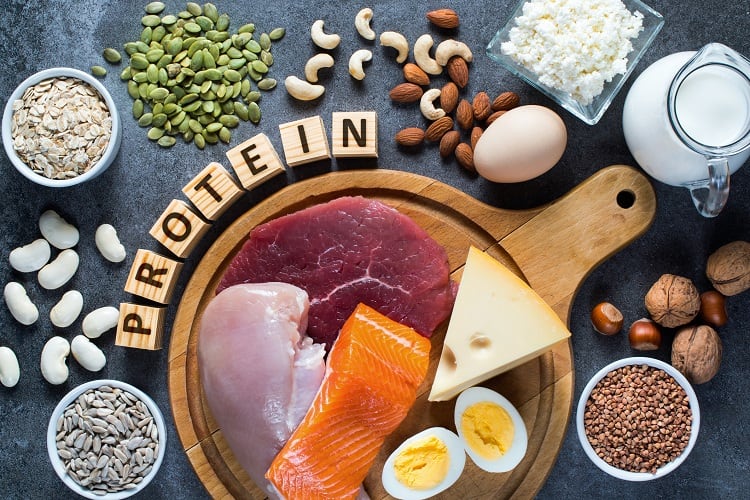Manufacturers are cutting food and beverage sugar content for many reasons. One of the main reasons, however, is cost.
The cost of sugar has risen sharply in the past year, with poor growing conditions central to the hike and likely to continue due to changing climates. Added to the higher input cost of sugar is an enforced tax in some EU nations on food and drink containing high levels of fat, salt and sugar.
Manufacturers are also responding to calls from the EU to reduce sugar levels in food and beverages, as part of the Member State-led Sugar and Calorie Reduction Network, to make products healthier.
In a bid to balance the books, many manufacturers have moved to reduce or remove sugar altogether, often replacing it with sweeteners.
“We are focused on improving the nutritional profile of our portfolio and grow the sale of our more nutritious products,” a spokesperson for food and beverage giant Nestlé, told FoodNavigator. “We know that people are looking for tasty and balanced diets, and that includes more positive ingredients such as whole grains, dietary fibres and micronutrients, and less sugar, salt and fat.”
To help more efficiently feed consumer demand for reduced sugar products, Nestlé has introduced new cross category sugar reduction technology. Using an enzymatic process, the new tech reduces intrinsic sugar in ingredients like malt, milk, and fruit juices by up to 30%. The sugar-reduced ingredients are then used in recipes for various products. What’s more, sweeteners and bulking agents are not required to replace the volume of the eliminated sugar.
"Sugar reduction across our portfolio remains a priority,” says Stefan Palzer, chief technology officer for Nestlé. “This new technology is a true breakthrough, as we can reduce sugar without adding sweeteners, while preserving a great taste, all at a minimal cost increase.”
And this innovation is also producing another major benefit, the promotion of gut health, another rapidly growing food and beverage trend.
“Our scientists discovered that sugar reduction generates prebiotic fibres that support the microbiome, which is an additional benefit," says Palzer.
While the link to gut health is likely to prove popular with consumers, the reduced-sugar or sugar-free label may not. So, does reducing sugar boost or destroy sales?

Do consumers want reduced-sugar foods and beverages?
The concept of a reduced-sugar or sugar-free product may seem like a certain win for consumers, but the reality is far more complex. Why? Because many consumers do not want governments or the food and beverage industry to make health decisions for them. This is best illustrated by the Self Determination Theory, which analyses what motivates human behaviours, and places autonomy firmly at the top.
“A company that offers a wide range of product options and allows customers to make their own choices can foster a sense of autonomy,” said a spokesperson for marketing firm, Desert Dog. “This can make customers feel empowered and more satisfied with their purchasing decisions.”
In other words, it might be better for brands to offer consumers a range of products, from full-sugar content right down to no-sugar content.
However, this flies in the face of messaging from health organisations and governments attempting to reduce sugar consumption.
The World Health Organization (WHO) is calling for a reduction in free sugars consumption for both adults and children, recommending it comprises less than 10% of total energy intake. That's around 48g of sugar per day, and while some European nations are meeting this target, others aren't even close.
In fact, the intake from country to country varies wildly, with the chocolate capital of the world, Belgium the highest, at 48.3kg of sugar consumed per capita and Luxembourg the lowest at 10.8kg per capita, according to trends mapping firm, Landgeist.
What are free sugars?
Free sugars are sugars, which have been added to a food or drink. Additionally, free sugars refer to those that exist in processed foods such as honey, syrup and fruit juice. They are described as ‘free’ because they're not inside the cells of the food we eat.

One way of getting around potential consumer rejection is therefore ‘health by stealth’, a process of reducing sugar levels in products, without making it immediately obvious on front-of-pack labelling.
"Companies have been working to reduce sugars in food and drinks for many years," says a Food and Drink Federation spokesperson. And those reductions have not always been highlighted to the consumer.
A successful example of this is Yoplait’s recent move towards sugar reduction in its children’s yoghurts. The brand has deliberately slowed the process of reduction, in order to help consumers adjust to the changing flavour without switching to sweeter products.
“It’s possible that an unintended consequence of the past decade’s sugar reduction policies could be encouraging children to dump healthy yoghurts for junk food,” Ewa Moxham, head of marketing at Yoplait UK, says.
However, HFSS-free doughnut brand, Urban Legend, believes it's all about educating the consumer and earning their trust.
“In the UK, most of Coca-Cola’s carbonate sales now come from zero sugar or low sugar drinks. That was very different 20 or 30 years ago. I think if you can give the consumer an indulgent product and earn their trust… then yes they do want it,” Anthony Fletcher, founder of Urban Legend, says.
The industry also needs to be mindful of the health and environmental concerns associated with several of the most-used sweeteners on the market. The multiple bad-news stories connected to sweeteners could push consumers to favour sugar, a known and long-used product, over the alternatives.
In short, the reduction of sugar in foods and beverages is a minefield and one that brands must navigate carefully. However, it’s also one that brands are taking seriously and innovating for, meaning that over time a successful resolution will likely be found.




